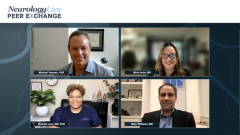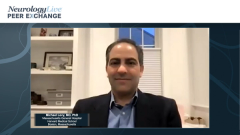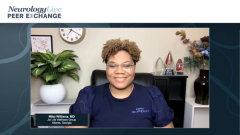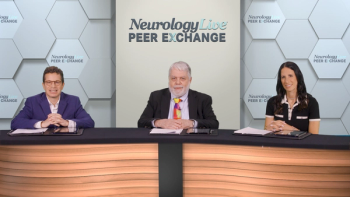
Role of Multidisciplinary Management in NMOSD
Mirla Avila, MD; Mitzi Williams, MD; Michael Levy, MD, PhD; and Michael Yeaman, PhD, review the role of a multidisciplinary team and gaps in the chain of care in the management of NMOSD.
Episodes in this series

Michael Yeaman, PhD: One other way of thinking about diagnosis might be to think about the sequential team of health care providers involved in diagnosing and treating patients. Mirla, in your experience, when a patient presents to you with a high index of suspicion for NMOSD [neuromyelitis optica spectrum disorder], give us a sense of the chain of health care providers that become involved in helping you diagnose and treat the disease.
Mirla Avila, MD: Sure. It depends on the route the patient comes in. I have a very good connection with our ophthalmology group. If they suspect it, they send me a text message and I’ll get the patient in my clinic right away, and I’ll see the patient myself. But with the patients who come from the ED [emergency department], usually I ask the on-call team to see them, so residents and medical students see them first. Whoever the attending [physician] is that week will see them. If they suspect NMOSD and I’m not the attending, they will call me and involve me. It will take a little longer. It depends on whether they’re coming through the ED route or directly from neuro-ophthalmology.
If they’re coming from a primary care physician, that will take the longest because sometimes they don’t image or suspect it. I remember a case of optic neuritis where they didn’t do an MRI because symptoms started getting better after about 2 or 3 weeks. Then when she developed another optic neuritis, that caught their eye and they referred her to a general neurologist, and then the general neurologist [referred the patient] to myself. That took a little longer.
Michael Yeaman, PhD: [That shows] the importance of a specialist who knows NMOSD coordinating the process. Mitzi, maybe you could share with us your experience in how and when you get neuroradiology involved in helping with the diagnosis.
Mitzi Williams, MD: That’s an excellent question. I’m very fortunate that most of the studies that I order are read by a neuroradiologist, and I also look at all of the MRIs of all of my patients. I’m not a neuroradiologist, but I look at all of the studies with the patient so that we can make sure we’re on the same page and that they see the same thing I’m seeing. If there’s any question about the reading or the interpretation of the study, I may send it for an independent read or I may send the patient for another imaging test where it can be read appropriately.
Michael Yeaman, PhD: Thank you so much. Michael, in your experience, are there gaps in the chain? If so, do they affect differentially different populations of patients?
Michael Levy, MD, PhD: There are a few gaps. The gaps I notice are in physical therapy [PT] and rehabilitation, pain management, psychiatry, and urology. You need experts in these areas who are interested in NMOSD because they have a unique pathophysiology and different treatment strategies that work for them. Finding these experts is hard, but when you find them, they become useful and those patients gain a lot from that expertise.
Mitzi Williams, MD: When we talk about access to care and social determinants of health, this could also potentially be a barrier. Because for physical therapy, I’ve had multiple patients say, “I would love to do PT, but I can’t afford the co-pay.” There are expenses that go with these specialty treatments that would certainly significantly improve a person’s quality of life, but the barriers, such as transportation and finances, could affect their overall care and quality of lifelong term.
Transcript edited for clarity
Newsletter
Keep your finger on the pulse of neurology—subscribe to NeurologyLive for expert interviews, new data, and breakthrough treatment updates.






















